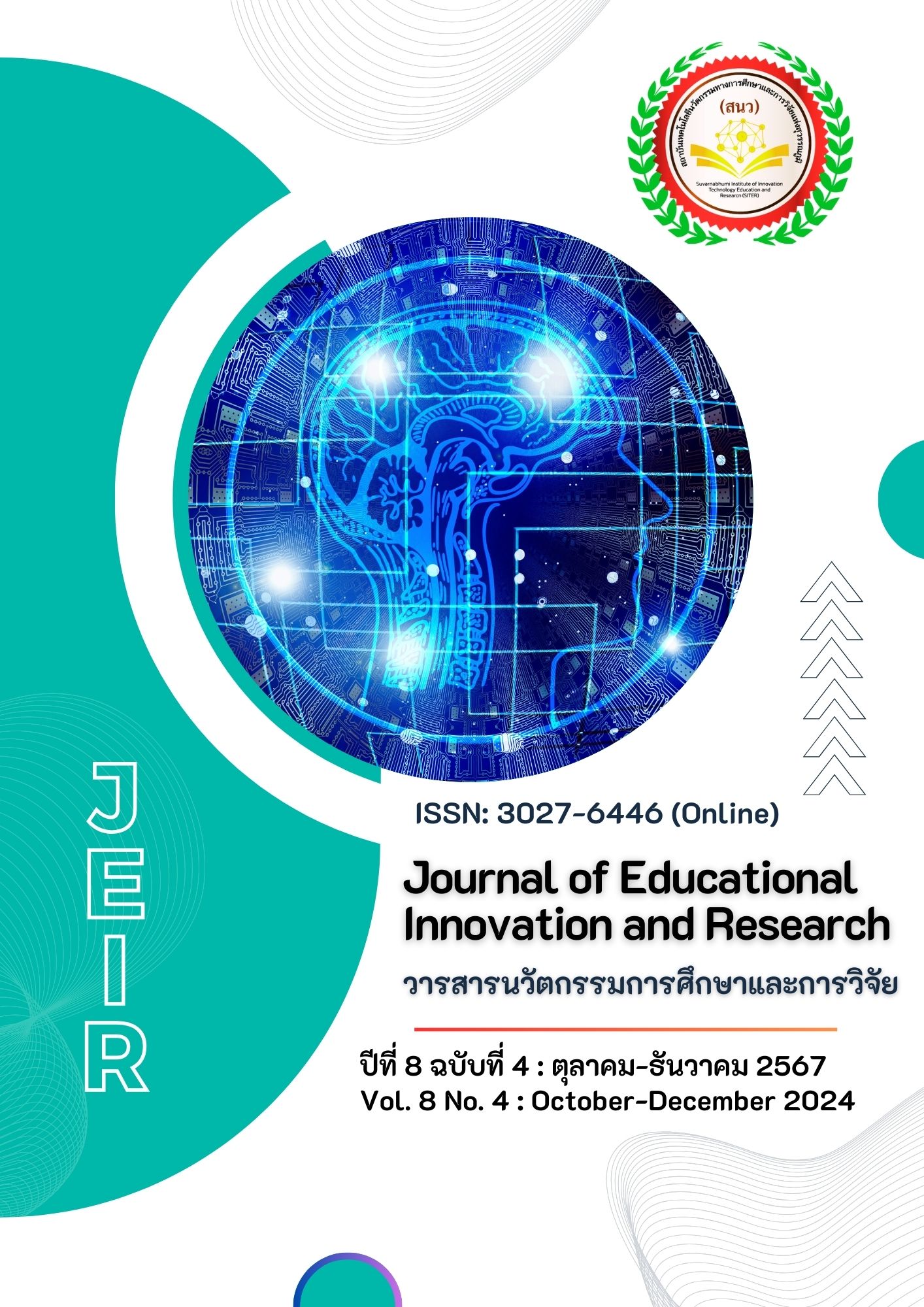เบาะรองนั่งมหัศจรรย์ ลดอาการเมื่อยล้าบริเวณก้นของนักศึกษาพยาบาลศาสตร์ชั้นปีที่ 3 มหาวิทยาลัยสวนดุสิต
Main Article Content
บทคัดย่อ
บทความนี้มีวัตถุประสงค์ 1) เพื่อพัฒนานวัตกรรมเบาะรองนั่งมหัศจรรย์ 2) เพื่อเปรียบเทียบความแตกต่างของความเมื่อยล้าบริเวณก้นในระยะก่อนและหลังการใช้นวัตกรรมฯ และ 3) เพื่อประเมินความพึงพอใจในการใช้นวัตกรรมฯ รูปแบบการวิจัยเป็นการวิจัยเชิงปริมาณกึ่งทดลอง กลุ่มตัวอย่าง คือ นักศึกษาหลักสูตรพยาบาลศาสตรบัณฑิต ชั้นปีที่ 3 มหาวิทยาลัยสวนดุสิต จำนวน 10 คน ที่สมัครใจและมีความเมื่อยล้าบริเวณก้นตั้งแต่ระดับ 2 ขึ้นไป เครื่องมือที่ใช้ในการวิจัย ได้แก่ เบาะรองนั่งมหัศจรรย์ แบบประเมินความเมื่อยล้า และแบบสอบถามความพึงพอใจ ผ่านการตรวจสอบความตรงจากผู้ทรงคุณวุฒิจำนวน 3 คน ได้ค่า IOC= 0.67-1.00 และ 0.67-1.00 และนำไปทดสอบหาค่าความเที่ยงกับนักศึกษาพยาบาลที่ไม่ใช่กลุ่มตัวอย่าง จำนวน 5 คน ได้ค่าสัมประสิทธิ์แอลฟา = 0.71 กลุ่มตัวอย่างจะทดลองนั่งเบาะมหัศจรรย์ นาน 15 นาที คนละ 1 ครั้ง/การนั่งเรียนหรือนั่งทำงาน 3 ชั่วโมง วิเคราะห์ข้อมูลโดยใช้ ค่าเฉลี่ย ส่วนเบี่ยงเบนมาตรฐาน และสถิติอ้างอิง Wilcoxon signed rank test ผลการวิจัยพบว่า
1. นวัตกรรมเบาะรองนั่งมหัศจรรย์ที่พัฒนาขึ้นสามารถนำมาใช้ได้ ทำให้ระดับความเมื่อยล้าบริเวณก้นก่อนและหลังการใช้นวัตกรรมเบาะรองนั่งมหัศจรรย์มีค่าเฉลี่ยเท่ากับ 2.50 (SD=0.71), 1.30 (SD=0.48) ตามลำดับ
2. เมื่อเปรียบเทียบความแตกต่างของระดับคะแนนความเมื่อยล้าบริเวณก้นก่อนและหลังการใช้เบาะรองนั่งมหัศจรรย์โดยใช้สถิติ Wilcoxon signed rank test พบว่า มีระดับความเมื่อยล้าบริเวณก้นลดลงอย่างมีนัยสำคัญทางสถิติที่ .01
3. มีค่าเฉลี่ยระดับความพึงพอใจในภาพรวมหลังใช้นวัตกรรม 4.50 (SD=0.71) อยู่ในระดับพึงพอใจมากที่สุด ดังนั้น นวัตกรรมเบาะรองนั่งมหัศจรรย์ที่พัฒนาขึ้นมาสามารถช่วยลดความเมื่อยล้าบริเวณก้นได้
Article Details

อนุญาตภายใต้เงื่อนไข Creative Commons Attribution-NonCommercial-NoDerivatives 4.0 International License.
เอกสารอ้างอิง
Bertolotti, G. M., Cristiani, A., & Šerbedzija, N. (2013). The REFLECT project and the implementation of a seat adaptation system in an automotive environment. Microprocessors and Microsystems, 37, 1063-1072. https://doi.org/10.1016/j.micpro.2013.06.004
Bhatia, A., Kalsi, S., Sehgal, A. K., & Singh, I. (2022). Comparative study of different seat cushion materials to improve the comfort of tractor seat. Journal of the institution of engineers, India, 103(1), 387–396. https://doi.org/10.1007/s40030-022-00622-8
Brock, A., & Hundley, H. (2018). Phrases for Growth Mindset: A Teachers Guide to Empowering Students Through Effective Feedback and Praise. Ulysses Press, Berkley, CA.
Corlett, E. N., & Bishop, R. P. (1976) A technique for measuring postural discomfort. Ergonomics, 9, 175-182. https://doi.org/10.1080/00140137608931530
Kett, A. R., & Sichting, F. (2020). Sedentary behaviour at work increases muscle stiffness of the back: Why roller massage has potential as an active break intervention. Applied Ergonomic, 82, 102947. https://doi.org/10.1016/j.apergo.2019.102947.
Kumar, V., Mishra, R. K., & Krishnapillai, S. (2019). Study of pilot's comfortness in the cockpit seat of a flight simulator. International Journal of Industrial Ergonomics, 71, 1-7. https://doi.org/10.1016/ j.ergon.2019.02.004
Leeraphan, T. (2022, November 19). Assorted problems with back pain. Doctor who specializes in bones and joints. https://taninnit.com/general-knowledge-menu/back_pain/121-backachec-disease.html
Office of Vocational Research and Development. (2022, November 9). Rubber seed cushions. https://nia3portal.emworkgroup.co.th/info/innovation/item/39660
Phajan, T. & Sooksalung, P. (2020). Prevalence and associated factors of low back pain among health personnel Khon Kaen Provincial Public Health Office. Academic Journal of Community Public Health, 6(3), 196-205.
Roja, Z., Kalkis, H. & Roja, I. (2015). Measuring muscle fatigue in relation to the workload of health care workers. 6th International Conference on Applied Human Factors and Ergonomics (AHFE 2015) and the Affiliated Conferences, AHFE 2015. Procedia Manufacturing, 3, 4189–4196. https://doi.org/ 10.1016/j.promfg.2015.07.394
Srimahun, M. (2020). The design accessories for chairs from rubber for relaxation while working. Art Pritas Journal, 8(1), 1-12.
Srisaman, W., Harnpicharnchai, K. & Limmongkon, Y. (2018). The effectiveness of a cushion to reduce fatigue from sitting work in department of detergent fold in community hospitals in Sisaket province. Khon Kaen University. Community Health Development Quarterly, 6(2), 177-195.
Tongdi, N., Inwan, C., Proytong, S., Kaewlomkai, J., Deepong, C. & Choochouy, N. (2021). Muscle pain and risk factors of muscle pain during the online learning and working from home among the students and staffs of Faculty of Public Health, Thammasat University, Lampang Campus. Thai Journal of Ergonomics, 4(1), 47-57.
Trakulkasemsuk, P., Phanomsarnnarin, N., Yodsai, T. & Wongsakul, S. (2021). A causal relationship model of online learning on secondary school students’ low back pain. Journal of MCU Social Science Review, 10(3), 26-38.
Vaezipour, A., Andrews, N., Oviedo-Trespalacios, O., Amershi, F., Horswill, M., Johnston, V.
& Delhomme, P. (2022). Exploring driving behaviour from the perspectives of individuals with chronic pain and health professionals. Applied Ergonomics, 102, 103755. https://doi.org/ 10.1016/j.apergo.2022.103755


